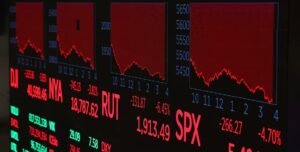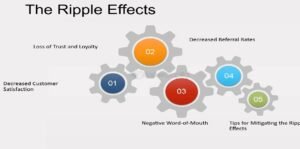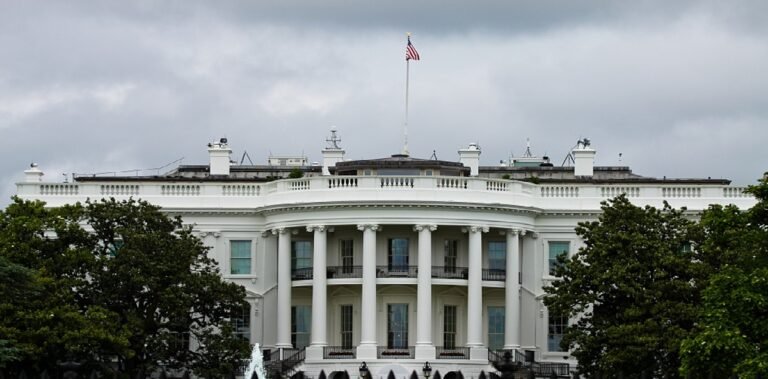
Trump Tariff Fallout: 3 Damaging Effects on the Economy
The Trump administration’s trade policies, particularly the imposition of tariffs on imports from China, the European Union, and other trading partners, were some of the most controversial economic decisions of his presidency. While the stated goal was to protect American industries, revive manufacturing, and reduce trade deficits, the long-term effects of these tariffs have sparked intense debate among economists, businesses, and policymakers.
Years later, the Trump tariff fallout is still being felt across multiple sectors of the U.S. economy. Rather than delivering the promised economic revival, the Trump tariff fallout has led to unintended consequences—higher consumer prices, retaliatory trade measures, and disruptions in global supply chains. Experts continue to analyze how the Trump tariff fallout is reshaping trade policies and economic stability.
In this article, we will examine three major damaging effects of Trump’s tariffs on the economy:
Higher Costs for Consumers and Businesses
Retaliatory Tariffs and Lost Export Markets
Supply Chain Disruptions and Economic Uncertainty
By analyzing these impacts, we can better understand why tariffs—despite their political appeal—often backfire as an economic strategy.
1. Higher Costs for Consumers and Businesses

The Immediate Price Shock
One of the most direct effects of tariffs is that they act as a tax on imports, raising costs for businesses that rely on foreign goods”Businesses invariably shift these added expenses onto customers through marked-up retail pricing.”
A study by the National Bureau of Economic Research (NBER) found that the Trump tariffs cost U.S. companies and consumers $51 billion annually in additional taxes. Industries such as steel, aluminum, and electronics saw immediate price hikes, which then rippled through the economy.
Everyday Goods Became More Expensive
- Appliances & Electronics – Companies that imported components from China faced higher costs, leading to price increases on products like washing machines (up 12% due to tariffs).
- Automobiles – Steel and aluminum tariffs added $1,400 to the average price of a new car.
- Groceries – Tariffs on Chinese food imports (like seafood and spices) and retaliatory EU tariffs on American agricultural goods led to higher grocery bills.
Small Businesses Struggled to Adapt
Unlike large corporations, small businesses lacked the resources to absorb tariff costs or shift supply chains. Many were forced to either raise prices (losing customers) or cut profit margins (hurting sustainability).
Key Takeaway: While tariffs were meant to protect U.S. industries, they ended up functioning as a hidden tax on American consumers and businesses.
2. Retaliatory Tariffs and Lost Export Markets

Trade Wars Escalated Quickly
- When the U.S. imposed tariffs, trading partners retaliated—leading to a lose-lose economic battle.
- China slapped tariffs on $110 billion worth of U.S. goods, targeting agriculture (soybeans, pork) and manufacturing.
- The European Union imposed tariffs on American motorcycles (Harley-Davidson), bourbon, and jeans.
- Canada and Mexico (before USMCA) taxed U.S. dairy, steel, and agricultural products.
Farmers Took the Hardest Hit
The Trump tariff fallout hit American farmers hard, especially soybean producers who relied heavily on Chinese demand. As part of the Trump tariff fallout, China shifted to Brazilian suppliers, causing U.S. soybean prices to plummet by 20%. This ripple effect of the Trump tariff fallout led to farm bankruptcies and over $28 billion in federal bailouts to keep the agricultural sector afloat.
Long-Term Damage to U.S. Exporters
Even after some tariffs were lifted, many foreign buyers remained hesitant to rely on U.S. suppliers, fearing future trade disruptions. This erosion of trust made it harder for American businesses to regain lost market share.
Key Takeaway: Retaliatory tariffs hurt U.S. exporters more than they helped protected industries, proving that trade wars have no real winners.
3. Supply Chain Disruptions and Economic Uncertainty
Manufacturers Faced Chaos
Many U.S. companies relied on Chinese components for production. When tariffs made these imports more expensive, businesses scrambled to find alternatives—often at higher costs or lower quality.
- Electronics & Tech – Apple warned that tariffs would raise iPhone prices.
- Automotive Industry – Factories faced delays due to pricier imported parts.
Investment and Hiring Slowed
Uncertainty over trade policy made businesses hesitant to expand. A Federal Reserve study found that companies exposed to tariffs cut investment by 1.2% and reduced employment growth.
COVID-19 Exposed the Fragility
When the pandemic hit, global supply chains were already strained from trade wars. The U.S. faced shortages in medical supplies, semiconductors, and other critical goods—partly because tariff policies had discouraged diversified sourcing.
Key Takeaway: Tariffs weakened supply chain resilience, making the U.S. economy more vulnerable to shocks.
4. The Ripple Effect: Secondary Economic Consequences

While the primary impacts of Trump’s tariffs were felt directly in consumer prices, trade relations, and supply chains, the Trump tariff fallout extended far beyond these immediate effects. This Trump tariff fallout triggered a chain reaction that disrupted long-term business planning and undermined investor confidence. In less visible but equally damaging ways, the Trump tariff fallout further weakened the U.S. economy, revealing the broader consequences of protectionist policies.
A. Inflationary Pressures Intensified
The Trump tariff fallout contributed to broader inflationary trends, complicating the Federal Reserve’s monetary policy. As part of the Trump tariff fallout, additional costs from import taxes trickled into everyday consumer goods, raising prices across the board. This widespread Trump tariff fallout placed added pressure on both households and policymakers trying to stabilize the economy.
- Housing markets (steel tariffs raised construction costs)
- Energy prices (aluminum tariffs impacted oil and gas equipment)
- Technology sector (semiconductor shortages worsened)
- This inflation reduced consumers’ purchasing power at a time when wage growth remained stagnant.
B. Job Losses in Dependent Industries
While some manufacturing jobs were temporarily protected, the Trump tariff fallout led to far more losses in industries that relied on affordable imports or strong exports. The Trump tariff fallout particularly impacted sectors like automotive, electronics, and agriculture, where increased costs reduced competitiveness. These examples highlight how the Trump tariff fallout created long-term challenges for American workers and businesses.
- Automotive sector – 30,000+ jobs lost due to higher material costs (Center for Automotive Research)
- Agriculture – Thousands of small farms went bankrupt after losing Chinese markets
- Retail – Many stores closed as consumers cut back on tariff-inflated goods
- C. Reduced Foreign Direct Investment (FDI)
Uncertainty over U.S. trade policy made the country less attractive for foreign companies. FDI inflows dropped by 17% in 2018-2019 (Commerce Department data), particularly in:
- Automotive plants
- Tech manufacturing
- Pharmaceutical research
5. The Myth of “Winning” Trade Wars
Trump famously claimed “trade wars are good, and easy to win.” The data tells a different story.
A. The Trade Deficit Actually Grew
- Despite tariffs meant to reduce trade imbalances:
- The U.S. trade deficit with China hit a record $419 billion in 2018
- Overall trade deficit grew by 12% under Trump’s term
B. Minimal Gains in Protected Industries
- Steel and aluminum producers saw short-term benefits, but at what cost?
- Steel employment grew by just 1,200 jobs (Economic Policy Institute)
- Those gains were offset by 16,000+ job losses in steel-consuming industries
C. Long-Term Erosion of U.S. Trade Leadership
The aggressive tariff approach contributed significantly to the Trump tariff fallout, damaging America’s reputation as a reliable trading partner. As the Trump tariff fallout unfolded, many countries began seeking more stable alternatives to U.S. markets. This shift, driven by the Trump tariff fallout, opened the door for competitors to strengthen global trade ties at America’s expense.
The EU-China investment deal
The Comprehensive and Progressive Agreement for Trans-Pacific Partnership (CPTPP) (from which the U.S. withdrew)
6. Lessons for Future Trade Policy
The Trump tariff experiment provides clear lessons for how (and how not) to approach trade:
A. What Doesn’t Work
- Blanket tariffs – They punish allies and adversaries alike
- Unilateral actions – Without multilateral support, retaliation is inevitable
- Ignoring economic interdependence – Modern supply chains can’t be reshored overnight
B. Better Alternatives
- Targeted trade enforcement – Against specific unfair practices (like IP theft) rather than whole countries
- Investing in competitiveness – Through R&D and infrastructure rather than protectionism
- Strengthening alliances – Working with the EU, Japan, and others to present a united front against China
Conclusion: The High Cost of Protectionism
While Trump’s tariffs were politically popular among some voters, their economic consequences were overwhelmingly negative. Instead of strengthening American industry, they: Raised prices for consumers and squeezed businesses Triggered retaliatory tariffs that hurt U.S. exporters Disrupted supply chains and increased economic instability Economists widely agree that tariffs are a blunt and inefficient tool for trade policy. Instead of protectionism, a better approach would focus on innovation, workforce training, and strategic trade alliances—without sparking costly trade wars.
As the U.S. continues to navigate global trade dynamics, the lessons from the Trump tariff fallout remain crucial: economic policies must be measured not by their political appeal, but by their real-world impact on businesses and consumers
Frequently Asked Questions
Q1: Did Trump’s tariffs achieve their intended purpose?
A: The tariffs largely failed to achieve their main goals:
- The U.S. trade deficit with China reached record highs during the tariff period
- Manufacturing jobs saw minimal net gains (only 1,200 in steel despite massive tariffs)
- China didn’t make significant structural changes to its trade practices
Q2: Who paid the cost of these tariffs?
A: Contrary to Trump’s claims that “China paid,” multiple studies show:
- U.S. importers bore 90%+ of tariff costs (Tax Foundation)
- American consumers paid an estimated $1.4 billion extra per month (NY Fed)
- Small businesses were disproportionately hurt compared to large corporations
- Q3: Are any of these tariffs still in effect today?
A: Yes, surprisingly:
- About 66% of Trump-era China tariffs remain (as of 2024)
- The Biden administration has kept most in place while reviewing trade policy
- Some tariffs were modified but not eliminated (e.g., solar panel tariffs adjusted)
Q4: What was the most damaging retaliatory tariff?
A: China’s agricultural tariffs caused the most concentrated pain:
- Soybean exports to China dropped 75% initially
- Farm bankruptcies reached an 8-year high in 2019
- Required $28 billion in taxpayer-funded farmer bailouts
Q5: Could tariffs ever work as an economic strategy?
A: Economists suggest only in very limited cases: When narrowly targeted at specific unfair practices ,When coordinated with allies for maximum leverage ,When combined with domestic industry support
But broad tariffs like Trump’s consistently backfire according to 85% of economists surveyed (IGM Chicago)
Q6: What’s the #1 lesson from this tariff experiment?
A: Trade wars are far more complex and damaging than political rhetoric suggests. The data shows:
- Every
- 1intariffrevenuecosttheeconomy
- 1intariffrevenuecosttheeconomy1.50 in lost efficiency (NBER)
- For every protected job, multiple others were lost downstream
- Long-term supply chain damage persists years later






